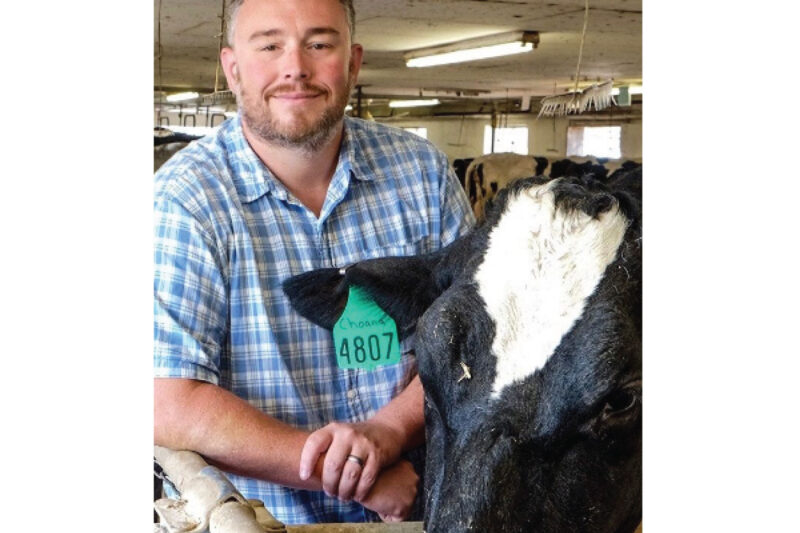This episode “Diet Manipulation to Improve Digestibility & Microbial Protein Synthesis” was presented at the 2025 Florida Ruminant Nutrition Symposium Mini-Symposium
Episode 153: Improve Digestibility & Microbial Protein Synthesis
Timestamps:
Microbial protein has always been Dr. Frikins’ main interest. It’s the most important and consistent source of protein for the cow, with a very high amino acid content. Histidine is the only exception, but bypass protein sources high in histidine complement microbial protein well. Our assessment of microbial protein is all based on prediction models. In his presentation, Dr. Firkins talked about what we can do to have consistently high microbial protein production and how to make the best use of the models. He touched on starch and fat content as two areas of focus, emphasizing a balanced diet to achieve a balanced supply of microbial protein. (5:36)
Dr. Firkins notes that about 90% of the bacteria in the rumen can’t be cultured, and there is great diversity in the rumen. There’s a core group of bacteria that almost every cow has that are really good at their job because they’ve been co-selected along with the cow for fiber digestion. The panel discusses how much the microbiome changes over time, host interactions with the microbial population, and inoculation of calves at birth and weaning. (8:47)
Dr. De Souza and Dr. Faciola talk about starch associative effects and their impacts on fiber digestibility, how sugars impact the rumen and butyrate production, and the importance of butyrate in de novo milk fat synthesis. Dr. Frikins hypothesizes that when sugars improve fiber digestibility, the sugar stimulates how fiber digesters do their job. Some studies have shown an increase in rumen pH when sugars are supplemented, which may be part of the mechanism of improved fiber digestibility. However, he doesn’t recommend using sugars when there is a lot of starch in the diet. (13:38)
Dr. Faciola and Dr. Firkins discuss some of the finer points of the dietary starch and fiber digestibility relationship. What are you replacing when you add more starch? What is the proper amount of effective fiber in higher-starch diets? On the other hand, if you decrease starch a little bit, there might be more room for fat. Well-managed cows with adequate effective fiber can probably handle more starch. Dr. Firkins underlines that starch is more digestible than fiber and thus supports microbial protein, but an optimum level is desirable, perhaps 28-20%. (20:37)
The panel talks about microbial growth efficiency and the energy-spilling mechanisms some bacteria have. Some models suggest that starch-digesting bacteria have higher maintenance energy requirements. The group then pivots to methane production and available feed additives marketed to reduce methane. Dr. Firkins notes that there is quite a bit of variability in the additives. He emphasizes that if we’re using these products, we need to know and measure what’s in them and have them be consistent. This is challenging due not only to variability in product, but also rumen adaptation. Dr. Firkins also reminds the audience that improving the cow’s efficiency in general in a variety of ways will lead to a smaller environmental footprint. This can range from improving reproductive efficiency to understanding differences in the microbiome of cows who emit more or less methane and trying to shift microbial populations to those with lower emissions. (23:12)
Dr. De Souza and Dr. Firkins discuss fatty acid supplementation and fiber digestion relationships. Dr. Firkins explains that in the microbiology literature, it’s common to culture bacteria in a simple or complex medium, then add yeast culture. Interestingly, the yeast culture contains a lot of palmitic acid, which has been shown to improve fiber digestibility. He suggests the cell membrane of the bacteria is very critical. When fat supplementation depresses fiber digestibility, he suspects it’s disrupting the bacterial membrane. Dr. De Souza recommends 1-2% palmitic acid in the diet for optimal results. (33:58)
The panel touches on the importance and relevance of in vitro fermentation work, why histidine is the limiting amino acid in microbial protein, and Dr. Firkins’ passion for protozoa. (43:08)
Panelists share their take-home thoughts. (53:40)
Please subscribe and share with your industry friends to invite more people to join us at the Real Science Exchange virtual pub table.
If you want one of our Real Science Exchange t-shirts, screenshot your rating, review, or subscription, and email a picture to anh.marketing@balchem.com. Include your size and mailing address, and we’ll mail you a shirt.



